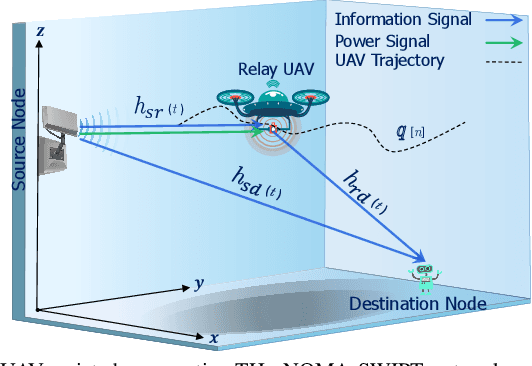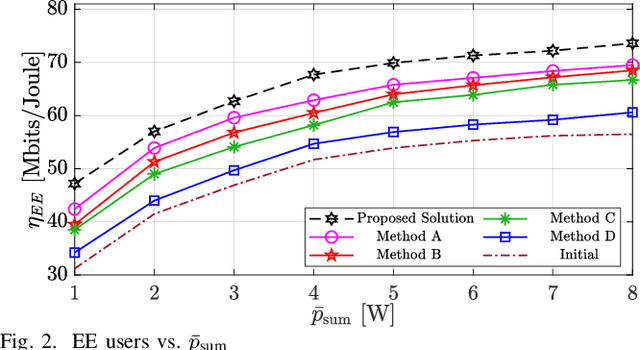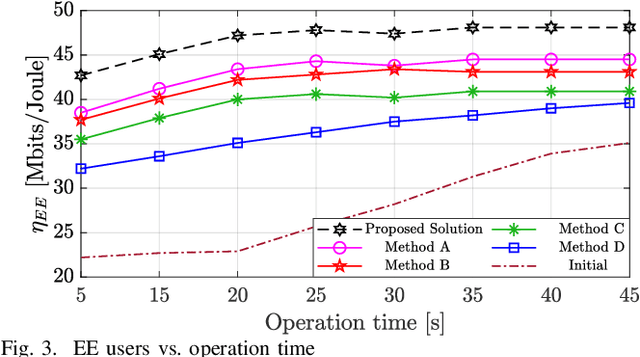On the Energy Efficiency of THz-NOMA enhanced UAV Cooperative Network with SWIPT
Paper and Code
Sep 25, 2023


This paper considers the energy efficiency (EE) maximization of a simultaneous wireless information and power transfer (SWIPT)-assisted unmanned aerial vehicles (UAV) cooperative network operating at TeraHertz (THz) frequencies. The source performs SWIPT enabling the UAV to receive both power and information while also transmitting the information to a designated destination node. Subsequently, the UAV utilizes the harvested energy to relay the data to the intended destination node effectively. Specifically, we maximize EE by optimizing the non-orthogonal multiple access (NOMA) power allocation coefficients, SWIPT power splitting (PS) ratio, and UAV trajectory. The main problem is broken down into a two-stage optimization problem and solved using an alternating optimization approach. In the first stage, optimization of the PS ratio and trajectory is performed by employing successive convex approximation using a lower bound on the exponential factor in the THz channel model. In the second phase, the NOMA power coefficients are optimized using a quadratic transform approach. Numerical results demonstrate the effectiveness of our proposed resource allocation algorithm compared to the baselines where there is no trajectory optimization or no NOMA power or PS optimization.
 Add to Chrome
Add to Chrome Add to Firefox
Add to Firefox Add to Edge
Add to Edge